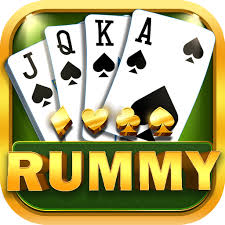Rummy Ten, Rummy Ten, a lesser-known variant of the classic rummy card game, offers a unique twist that combines strategic depth with the thrill of chance. While traditional rummy games like Indian Rummy and Gin Rummy have long been popular, Rummy Ten introduces its own set of rules and challenges, providing an engaging alternative for card game enthusiasts.
Overview of Rummy Ten
Rummy Ten is a multi-player card game that incorporates elements of traditional rummy but with its own distinctive rules. The game is played with a standard deck of 52 cards, and the objective is to form valid combinations of cards in sets and runs, with the ultimate goal of being the first to reach a predetermined number of points, typically 100 or 200, depending on the agreed-upon rules.
Basic Rules and Setup
- Number of Players: Rummy Ten can be played by 2 to 6 players.
- Deck: A standard 52-card deck is used. Some variations might include jokers as wild cards.
- Dealing: Each player is dealt 10 cards. The remaining deck is placed face down to form the draw pile, with the top card turned face up to start the discard pile.
- Objective: The primary goal is to arrange cards into valid sets and runs and to lay down all your cards to “declare” and end the round.
Key Components
- Sets and Runs: Players aim to form:
- Sets: Three or four cards of the same rank but different suits (e.g., 7♠, 7♦, 7♣).
- Runs: Three or more consecutive cards of the same suit (e.g., 4♠, 5♠, 6♠).
- Turn Structure: Players take turns drawing a card from either the draw pile or the discard pile and then discard one card to maintain a hand of 10 cards. The round ends when a player successfully forms valid combinations with all their cards and discards their final card.
- Winning the Round: To declare and win the round, a player must lay down all their cards in valid sets and runs. The other players then reveal their cards and score penalty points for unmelded cards.
- Scoring: Points are calculated based on the unmelded cards left in the players’ hands at the end of each round. Face cards (Kings, Queens, Jacks) typically carry higher points, while numbered cards have lower values.
Strategy and Tips
- Card Management: Carefully manage your hand to keep track of cards that might be beneficial for forming sets or runs. Avoid discarding cards that might help your opponents complete their combinations.
- Observation: Pay attention to the cards your opponents are discarding and drawing. This can give you clues about their hand and help you make strategic decisions about which cards to hold onto or discard.
- Flexible Planning: Be prepared to adjust your strategy based on the flow of the game. If your initial plan isn’t working, be ready to pivot and form alternative combinations.
- Endgame Tactics: As you approach the end of the round, focus on minimizing the points in your hand. This may involve discarding high-point cards that you can’t use effectively in sets or runs.
Variations and House Rules
Rummy Ten can be adapted with various house rules or variations to enhance the gameplay experience. Some common variations include:
- Jokers as Wild Cards: Introduce jokers into the deck, which can be used as wild cards to represent any card in a set or run.
- Changing the Number of Cards: Adjust the number of cards dealt to each player to modify the game’s difficulty level.
- Scoring Adjustments: Modify the point values of different cards or introduce special scoring rules to add complexity to the game.
Conclusion
Rummy Ten stands out as a refreshing variant of the traditional rummy genre, offering players a balanced mix of strategy and chance. Its straightforward rules and engaging gameplay make it a perfect choice for casual gatherings or more competitive settings. Whether you’re a seasoned rummy player or new to the game, Rummy Ten provides an exciting and dynamic experience that can be enjoyed by players of all skill levels. So, gather your friends, shuffle the deck, and dive into the world of Rummy Ten!




